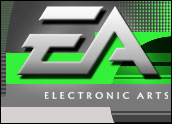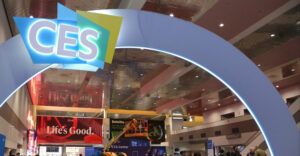
Electronic Arts (EA) — the world’s largest video game publisher by sales — made a statement in June when it announced it was forming a casual gaming division. Last month, the Redwood, Calif., company punctuated that statement with an exclamation mark by cutting a licensing deal with Hasbro, whose real-world gaming portfolio contains monster brands like Monopoly, Scrabble and Yahtzee.
The online casual game market is still small compared to what’s sold for console games — US$380 million versus $4.78 billion, according to estimates from Pacific Crest Securities and the NPD Group — but its growth is impressive, at 35 percent in this year alone.
On and Offline
That growth is expected to be fired by the spread of the genre beyond its online roots. It’s already proved successful on newer gaming units like Nintendo’s Wii and DS, and its prospects on mobile phones and handheld devices appear rosy.
TechNewsWorld recently spoke with Chip Lange, EA’s president and manager for its Hasbro business, about the casual game sphere and the impact the deal with the Pawtucket, R.I., toymaker will have on EA’s market position.
TechNewsWorld: What distinguishes casual games from other kinds of electronic games?
Chip Lange:
There are several traits that resonate with people when we talk about casual games.
The first is audience appeal. One of the things that our industry has not done enough of is creating games for a wider section of consumers. What we’re trying to do with the casual games division of EA is create products that appeal to a wider group than the traditional 18- to 34-year-old male gamer.
The second is these are games that anyone can pick up and play. It’s not a game that you have to invest a lot of time in to have fun with. If we can create games that allow you get to the fun factor fast and can be played quickly without a lot of instruction, we think we can widen our audience appeal and we’ll be approaching a very different market than we have approached historically in the gaming business.
TechNewsWorld: To what extent do gaming platforms influence the casual game market?
Lange:
When you look at something like the Nintendo Wii, you can definitely say that the design of that hardware platform has empowered more casual game design. You can say the same thing about the Nintendo dual screen (DS) and mobile phones.
What we’ve seen with some casual games is that a lot of consumers have a broad interest in social gaming, so something like Xbox Live has had success with some casual games because it’s fun to be able to play a competitive casual game with someone on the other side of the country. Those types of technological developments are unlocking some casual game designs that haven’t been capable in prior generations of hardware.
TechNewsWorld: Are electronic games becoming more of a family experience?
Lange:
I absolutely think that we are starting to see the early signs of that, and I think a deal like ours with Hasbro will empower that market trend to accelerate. Research that we’ve done on how people are playing the Nintendo Wii right now shows that more people are playing with that — with others in their family — than they are just playing solo. That’s a new trend. It’s a wider demographic within the family playing on that system. So I think you’re starting to see the kernel of a market transition that’s happening on that platform, which is people are using it as a form of family entertainment.
It’s what makes the Hasbro deal so timely. What better stable of family entertainment IP (intellectual property) than the lineup of Hasbro IP, and what better company to unlock their gaming potential in the gaming space than Electronic Arts? When we start looking at what the next generation of family entertainment looks like in the home, it looks like an EA-Hasbro digital world.
TechNewsWorld: Why is casual gaming growing so fast?
Lange:
It’s a combination of industry focus — companies are throwing resources at the market — and the market is broader than the one the gaming industry has traditionally made products for. There’s a huge market of under-leveraged game consumers out there who are anxious to play games but don’t want to play games designed for their younger brother. They want to play games with their interests in mind.
Our industry as a whole has created less content for that broader consumer than it has for the core gamer. As a result, there’s a real opportunity to see some fast growth as those less traditional gamers come into the market and start making gaming part of their core lifestyle.
TechNewsWorld: Was Electronic Arts caught flat-footed when the casual gaming market began to take off?
Lange:
I think we were caught flat-footed on the Nintendo Wii. We’re working to quickly address that. But EA has been focused on the casual game market longer than just about anybody else when you look at our “Sims,” which are designed for non-traditional gamers, and our Pogo service, which is the No. 1 online casual gaming channel.
So we’ve had products targeted at the casual gaming audience, but we haven’t had a core organizational focus around it. We’ve just had a couple of products going after it. The big shift you see here now is, let’s get back into position on the Wii, and let’s figure out how to organizationally develop a core competency around addressing this market.
TechNewsWorld: What attracted you to Hasbro as a partner, other than the power of its game brands?
Lange:
There was the inherent knowledge that casual gamers have of the properties and rule sets and game mechanics of Hasbro’s games. It amounts to instant understanding of how to play the game.
Then there were the marketing opportunities. The marketing opportunities between our two organizations is an unidentified strength of this deal. When you look at how many children and casual gamers Hasbro touches through distribution of its products and you look at the expertise that Electronic Arts brings in how to market digital games to consumers and convert them to purchasers, the combination of those two core competencies will really drive retail success for these products.
TechNewsWorld: Where do you see the casual gaming market going in the next three years?
Lange:
I think you’re going to see increased convergence of online technology into the traditional gaming space. More and more people will be connecting their consoles to the Internet. More and more people will be getting comfortable with what online brings to gaming.
You’re going to see continued convergence between platforms. The ability to use your mobile phone as a game system is going to be a wonderful trend to watch.
You’re also going to see a shakeout in the casual space where the value of name brands is going to have a real priority on what people are playing. As more casual players enter the market, they’re going to be drawn to the tried and true brands from the real world that they know and love.





















































